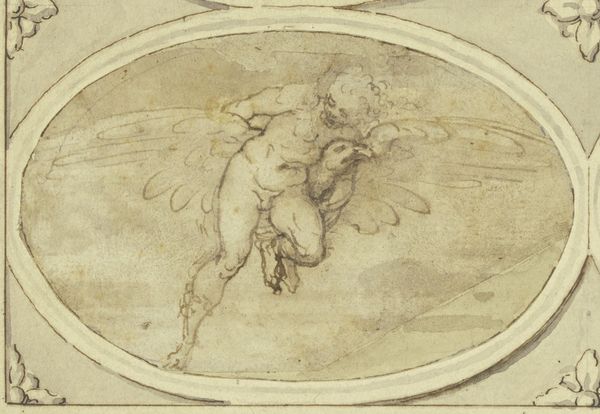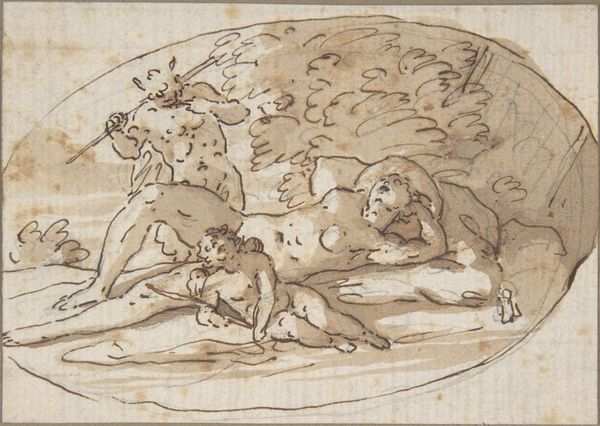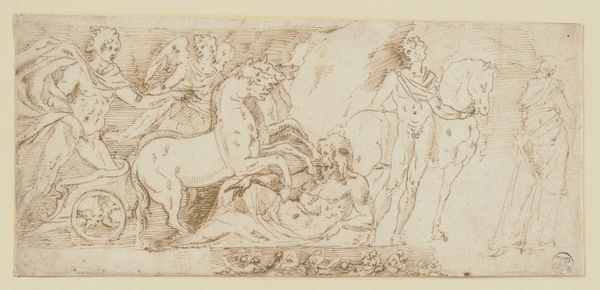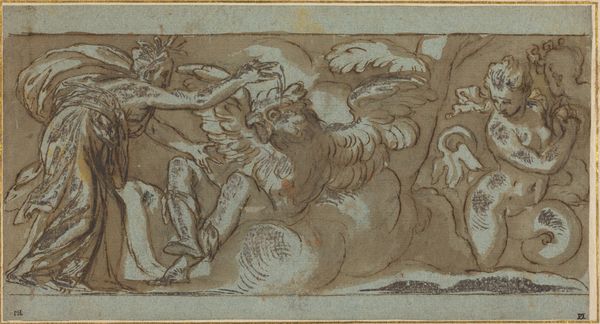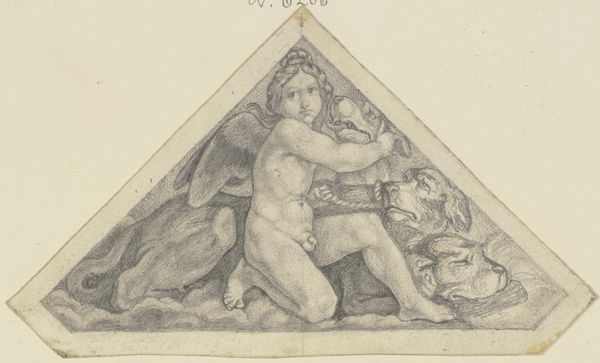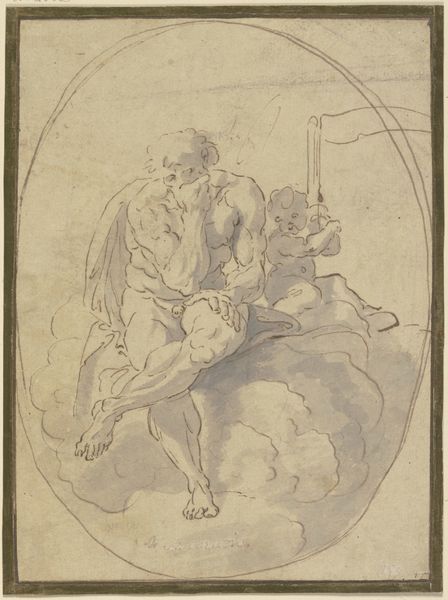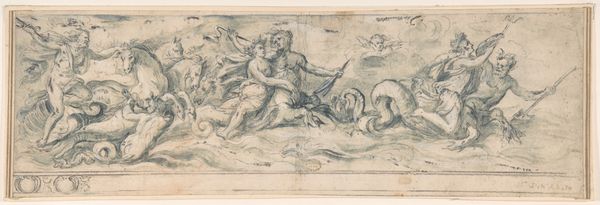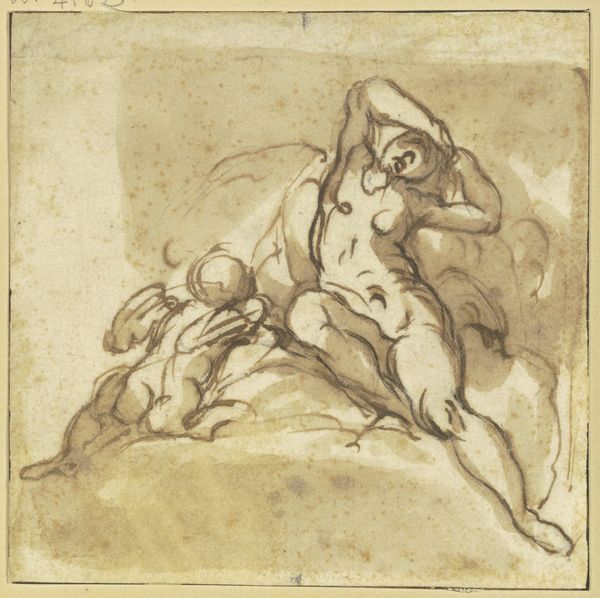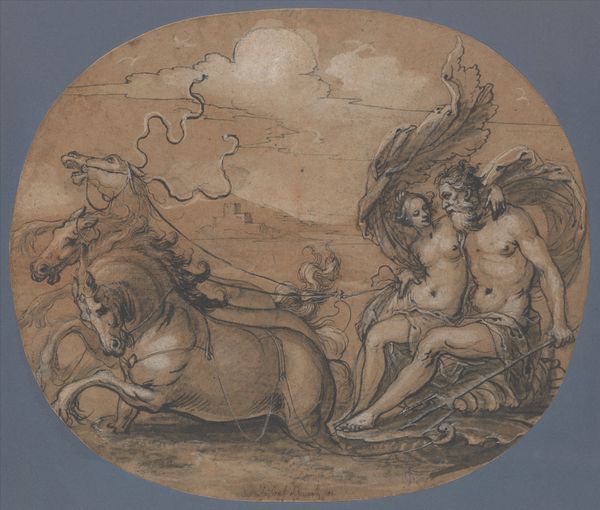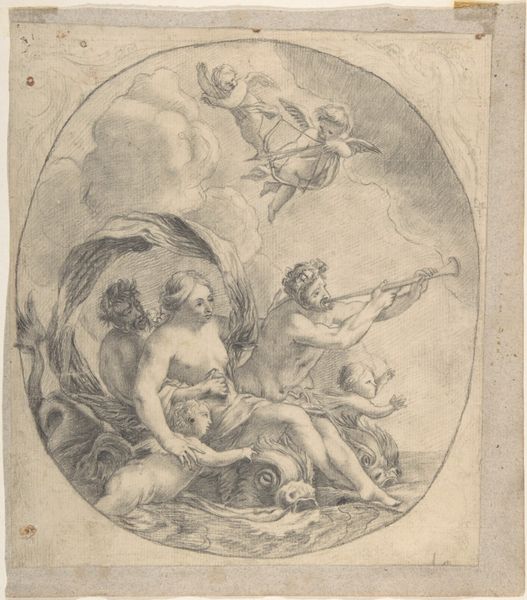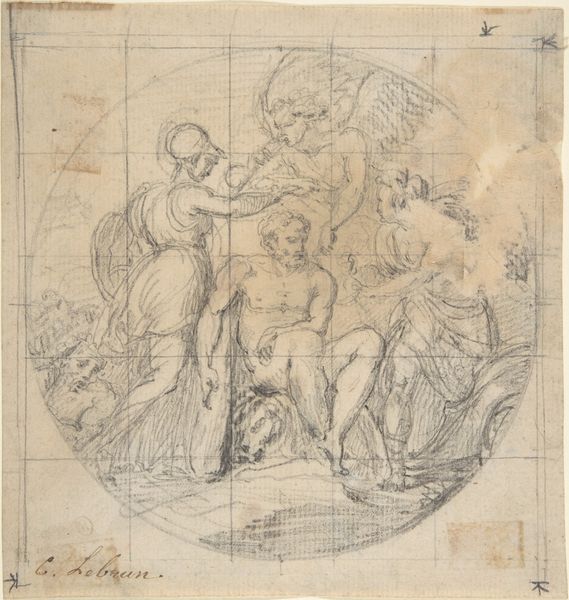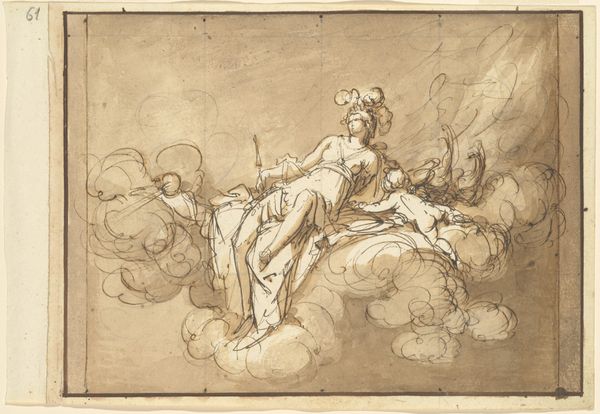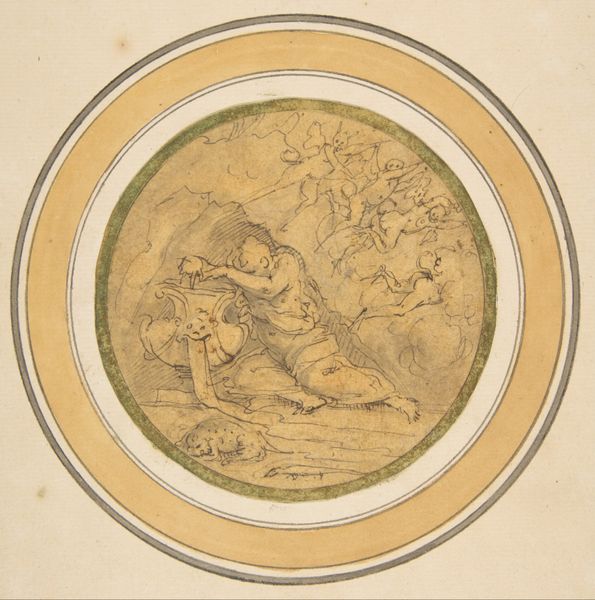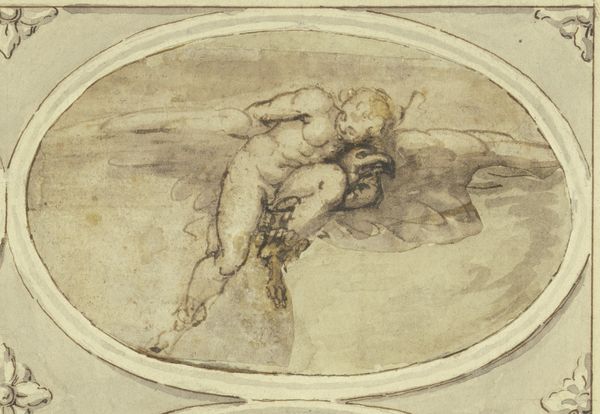
drawing, ink
#
drawing
#
figuration
#
11_renaissance
#
ink
#
13_16th-century
#
history-painting
#
italian-renaissance
#
nude
#
watercolor
Copyright: Public Domain
Curator: Today we’re looking at "Diana und Endymion" (or "Venus und Adonis") a Renaissance drawing attributed to Cherubino Alberti, held here at the Städel Museum. Editor: It has a tentative quality, almost like a dream fading at the edges. The figures are intertwined in what looks like a very tender embrace. Curator: Indeed. Alberti rendered this piece using ink, creating delicate lines and subtle shading to define form. What speaks to me is how the scene echoes classical myths about divine love and fleeting encounters. Editor: Well, I immediately question the power dynamic on display. Diana, if that is her, looms quite protectively, almost smothering Endymion in the throes of divine obsession. It reads to me as the perils of being an object of the divine gaze, robbed of agency. Curator: I appreciate your reading on the subject, although Alberti appears to hint at gentler sentiments as well. The symbolism connects with the idea of immortality, something divine beings often granted or denied to mortals in mythology. I feel the artist captures an interesting narrative of power, love, and the complexities of relationships between gods and humans. Editor: You know, situating this within its historical context—a Renaissance grappling with revived classical ideals and simmering power struggles—perhaps it mirrors aristocratic patronage, that almost claustrophobic sense of being cherished and confined simultaneously by a higher power. The drawing might just embody the period’s conflicted relationship to power itself, then and now. Curator: Interesting thought, particularly regarding Alberti's representation of historical paintings. It makes me see something new. Editor: These old images continue speaking volumes about gender and agency when viewed through the lens of our own power structures and contemporary dialogues. Curator: Indeed. Ultimately, the artwork creates a dialogue between the classical past, its revival in Renaissance art, and questions we still grapple with. Editor: Art's capacity to transcend time is so critical for reflection and understanding! Thanks for unpacking these subtle and nuanced messages with me.
Comments
No comments
Be the first to comment and join the conversation on the ultimate creative platform.
